
The Royal Caledonian Hunt is a Scottish racing club dating back to 1777.

The Royal Caledonian Hunt is a Scottish racing club dating back to 1777.
The Club was officially instituted on 2 August 1777 in Hamilton as 'the Hunters Club'. The following year the club took the name 'The Caledonian Hunt Club'. [1] The Duke of Hamilton was to be the President of the Club and the Countess Eglinton was to be the Patron. As the name implied the club was originally constituted to hunt, with the first fortnight long meeting set to take place at Haddington on 12 October 1778. However, it seemed that the club was also concerned from the beginning with horse racing. One year after it was instituted the club held races at Musselburgh. Two years after it was instituted the Caledonian Hunt club sponsored its first race at the Racecourse in Kelso. [2] So it was, that the club met twice a year at Kelso, using the Cross Keys Hotel as their meeting point. [3] Over time the frequency of their meets increased, in both Edinburgh and elsewhere. A Hunt Ball was held, a notable example of which was the ball of 1787, for which the Edinburgh Assembly Rooms were opened for the first time. In 1786 a Yorkshire Colonel visited the club and remarked:
A charming scene of confusion; cooks, ladies' servants, waitresses all running against each other, being the time of Kelso Races. The company is composed of gentlemen of the Turf on both sides of the Tweed with families and friends and also members of the Caledonian Hunt. Foxhounds and harriers hunt alternately in the mornings. There is also a concert and races and next night the gentlemen of the Hunt give a handsome ball. After the ladies retired therefrom, the gentlemen formed a party to drink their healths and when I got up at 8 they were still drinking and meant to sit till hounds went out. This meeting, I heard, is most expensive of any. An English Steward was obliged to pay 10 guineas for his room, though only there 5 nights.
— Colonel Thornton
Although the club became based in Edinburgh, the location of its race meetings varied each year, with Kelso playing host most often. [5] Although the club had a choice of 8 different courses in Scotland, they only chose Aberdeen once. [6]

Around 1787 Robbie Burns met with members of the Caledonia Hunt Club, having befriended a number of members around Edinburgh. Burns dedicated the first Edinburgh Edition of his Poems to the Hunt. To return the favour the treasurer of the Caledonia Hunt Club was instructed to "subscribe for one hundred copies in their name, for which he should pay Mr Burns £25, upon the publication of his book." [7] By 1792 Burns was himself a member of the Caledonia Hunt Club, however his name does not appear the official published list of members or honorary members. [8] A portrait of Robbie Burns was given to the club by the famous engraver William Walker. The print is now property of the British museum. [9]
In 1822 as part of his visit to Edinburgh King George IV attended the Caledonian Hunt Club's annual ball. He was so struck with the meeting that he agreed to be the patron of the club, permitting them to use the title 'Royal'. [1] Nathaniel Gow provided the music for the event, but refused to charge the club, having been so pleased by the response of the King to his music. [4]
Since the patronage of 1822, several other monarchs and royals have been involved with the club, including William IV, Queen Victoria and Prince Albert, and Edward VII.
In addition to Robbie Burns, the Royal Caledonia Hunt Club seems to have inspired the works of other artists. For example, The Caledonian Hunt, by Sir Alexander Don in 1780 and the Royal Caledonian Hunt's Delight, written by Mr James Miller in 1792 (later given words by Robbie Burns); and North's (Milles Macphail) Farewell to the Caledonian Hunt published as part of the Gow collection. [10]
The club continues to meet. Their AGM and annual dinner is hosted at The New Club in Edinburgh. [11] The current patron of the club is Prince Edward, Duke of Kent. [12]
Caledonia is a Roman name of Celtic origin for most of the area that has become Scotland.

Glasgow Warriors are a professional rugby union side from Scotland. The team plays in the United Rugby Championship league and in the European Professional Club Rugby tournaments. In the 2014–15 season they won the Pro12 title and became the first Scottish team to win a major trophy in rugby union's professional era. The side is known for its fast, dynamic and attacking style of play, using offloads and quick rucks. Defensively the club prides itself on its 'Fortress Scotstoun' where the club play at home.

George IV's visit to Scotland in 1822 was the first visit of a reigning monarch to Scotland in nearly two centuries, the last being by Charles II for his Scottish coronation in 1651. Government ministers had pressed the King to bring forward a proposed visit to Scotland, to divert him from diplomatic intrigue at the Congress of Verona.
Nathaniel Gow was a Scottish musician who was the fourth son of Niel Gow, and a celebrated performer, composer and arranger of tunes, songs and other pieces on his own right. He wrote about 200 compositions including the popular "Caller Herrin'".

The Caledonian Club is a prestigious Scottish-focused London members' club located at 9 Halkin Street SW1, near Belgrave Square in Belgravia, London, SW1.

The New Club is a private social club in the New Town area of Edinburgh, Scotland. Founded in 1787, it is Scotland's oldest club. The club occupied premises on St Andrew Square from 1809 until 1837, when it moved to purpose-built rooms on Princes Street. The 1837 building was replaced with a modern building to a design by Reiach and Hall, which is protected as a category A listed building. Women were admitted in 1970, and offered full membership from 2010.

Kelso Racecourse is a thoroughbred horse racing venue located in Kelso, Scotland. It is frequently described as "Britain's Friendliest Racecourse". It was voted the Best Small Course in Scotland and the North of England in 2007, 2012 and 2014 by the Racegoers Club. In addition to staging Scotland's most valuable hurdle race, the Morebattle Hurdle, Kelso stages a comparatively high number of Class 1, 2 & 3 races over jumps.
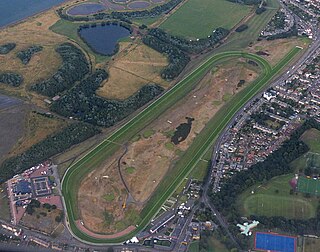
Musselburgh Racecourse is a horse racing venue located in the Millhill area of Musselburgh, East Lothian, Scotland, UK, close to the River Esk. It is the second biggest racecourse in Scotland and is the fourteenth biggest in the UK. In 2016, Musselburgh staged 28 fixtures. It was officially known as "Edinburgh Racecourse", and referred to as such in the English press, until the beginning of 1996 but was widely referred to as "Musselburgh" in Scotland long before that and was widely referred to as Musselburgh in the racing pages of Scottish newspapers.

Horseracing in Scotland is a popular spectator sport, with a history dating back over 900 years. There are currently five operating racecourses in Scotland - one exclusively for flat racing, two exclusively for jump racing and two mixed. Between them they held one hundred and three race meetings in 2014. The main National Hunt meeting held is the Scottish Grand National meeting at Ayr each April, and the main Flat meeting is the Ayr Gold Cup Festival, at the same course each September.

Robert Burns, also known familiarly as Rabbie Burns, was a Scottish poet and lyricist. He is widely regarded as the national poet of Scotland and is celebrated worldwide. He is the best known of the poets who have written in the Scots language, although much of his writing is in a "light Scots dialect" of English, accessible to an audience beyond Scotland. He also wrote in standard English, and in these writings his political or civil commentary is often at its bluntest.
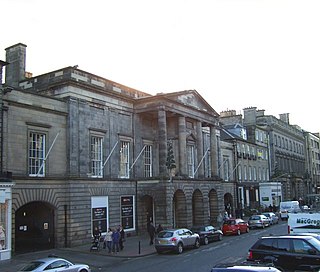
The Assembly Rooms are meeting halls in central Edinburgh, Scotland. Originally solely a meeting place for social gatherings, it is now also used as an arts venue and for public events, including the Edinburgh Festival Fringe and the Hogmanay celebrations. There are four rooms, with moveable chairs or tables, that are used year-round and are available for private functions: Music Hall, Ballroom, Supper Room and Edinburgh Suite.
The Tarporley Hunt Club is a hunt club which meets at Tarporley in Cheshire, England. Founded in 1762, it is the oldest surviving such society in England. Its members' exploits were immortalised in the Hunting Songs of Rowland Egerton-Warburton. The club also organised the Tarporley Races, a horse racing meeting, from 1776 until 1939. The club's patron is HRH The Prince of Wales.

Leith Races were the most important horse racing event in Scotland in the eighteenth century. They took place on the sands to the east of the harbour at Leith, near Edinburgh from 1504 to 1816. They first gained popularity through the patronage of the Duke of Albany, the future James VII and II, while he was Royal Commissioner at the Palace of Holyrood. Their exact date of origin had been lost by the mid-19th century but there is reference in the accounts of James IV's personal expenditure to a payment made in 1504 to a jockey, "the boy that ran the King’s horse", at Leith. There is also reference to them in the memoirs of the Earl of Huntly in 1591. From the Restoration until 1816, the races took place annually with very little intermission.
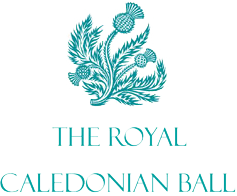
The Royal Caledonian Ball is a ball held annually in London for the benefit of Scottish charities. With few exceptions, the Royal Caledonian Ball has been held annually since 1849, and is the oldest charity ball in the world.

Gilbert Innes of Stow FRSE DL MWS was a Scottish banker, antiquarian and patron of the arts during the Scottish Enlightenment. He served as Deputy Governor of the Royal Bank of Scotland for 38 years. He was described as "the richest commoner in Scotland". A notorious womaniser, another more damning quote was "the acts of his whoredom are written in the parish chronicles of Scotland". He had at least 67 illegitimate children.

Poems, Chiefly in the Scottish Dialect is commonly known as the first Edinburgh Edition and the partial second setting has become known as the Stinking Edition. It is a collection of poetry and songs by Robert Burns, first "Printed for the Author" by William Smellie in Edinburgh and published or "Sold by William Creech" of Edinburgh on the 17 April, an announcement being made in the Edinburgh Advertiser on that date, although the date 21 April 1786 is given by a few authors. The Kilmarnock Edition made Robert Burns Caledonia's Bard whilst the 'Edinburgh Edition' elevated him into a position amongst the world's greatest poets.
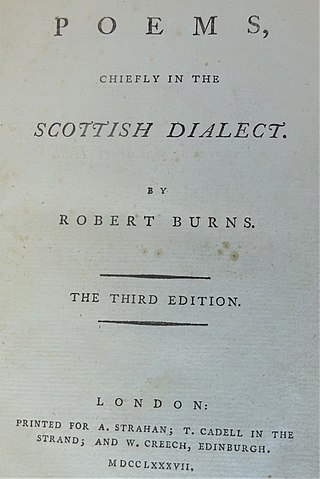
Poems, Chiefly in the Scottish Dialect is commonly known as the Third or London Edition and sometimes the Stinking Edition. It is a collection of poetry and songs by Robert Burns, printed for A. Strahan; T. Cadell in the Strand; and W. Creech, Edinburgh. MDCCLXXXVII The date of publication for the London Edition was in November 1787, however Strahan and Cadell had previously advertised for sale the 'Second' or 'Edinburgh Edition' using the 500 or so copies that William Creech still had that were unsold. The successful selling of these made a truly new 'London Edition' a commercially viable enterprise.

Alexander Laing was a Scottish architect who was mainly involved in house and castle design.
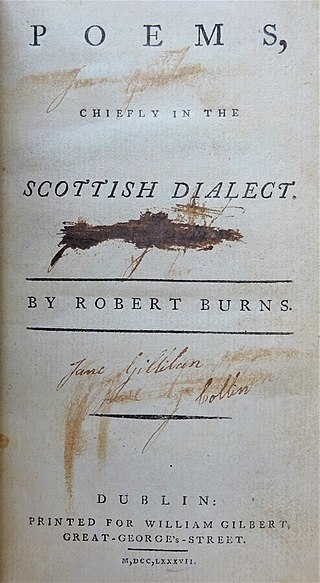
Poems, Chiefly in the Scottish Dialect was the second "pirated" issue of Robert Burns's work, being published in Ireland at Belfast without permission from or payment to the author or publisher. It is a so-called Stinking Edition, carrying the error Stinking for the Scots word Skinking (watery) in the poem "To a Haggis" because the type setters copied from a 1787 Stinking Edition of Poems, Chiefly in the Scottish Dialect. It has been shown to be from the same print setting as the Belfast Edition but with a different title page.

Poems, Chiefly in the Scottish Dialect was a 'pirated' edition of Robert Burns's work, being published in Ireland without permission from or payment to the author or publisher. It is a so-called 'Stinking Edition', carrying the error 'Stinking' for the Scots word 'Skinking' (watery) in the poem "To a Haggis" because the type setters copied from a 1787 'Stinking Edition' of Poems, Chiefly in the Scottish Dialect .